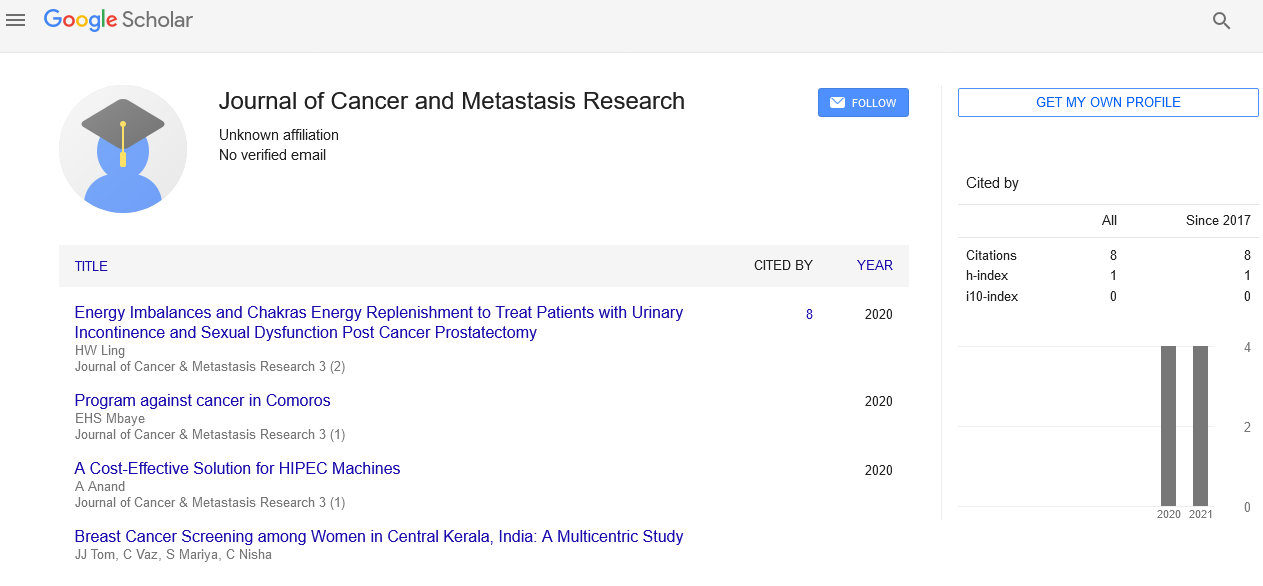
Sign up for email alert when new content gets added: Sign up
Abstract
Clinical characteristics and treatment outcome of an 86 year-old patient with Acute Myeloid Leukaemia with Acute Promyelocytic-like Morphology & uncommon RARA fusion variant
Author(s): Roberto Castelli, Valentina Rossi, Matteo Giovanni Della Porta, Riccardo Schiavon, Marco Barchiesi, Laura Cicconi and Francesco Lo CocoAcute promyelocytic leukaemia (APL) is a sub classification of acute myeloid leukaemia (AML) characterised by the translocation t(15;17) (q22;q21) generating the PML-RARA fusion gene. In rare cases of AML with APL like morphology, RARA can be merged to an another partner other than PML (e.g. PLZF, NPM1, NUMA1, STAT5B, PRKAR1A and others) and this genetic heterogeneity accounts for the different sensitivity to targeted agents, such as all-trans retinoic acid (ATRA) and arsenic trioxide (ATO). An 86-year-old man was referred to our hospital because of pancytopenia. Complete blood count (CBC) showed blood cells 4.190/μL (segment neutrophils 17%; lymphocytes 11%; monocytes 11%; eosinophils 1%; basophils 0%; leukemic cells 58%, metamyelocytes 2%); haemoglobin 97 g/L; and platelets 34.000/ μL. Bone marrow biopsy revealed about 100% cellularity, and 80% of the nucleated elements were leukemic cells. The leukemic cells showed medium to large size, irregular shape, finely chromatinized nuclei with distinct nucleoli and multiple Auer rods. Flow cytometric analysis demonstrated that the blast population unveiled high side scatter features and expressed bright CD33; dimCD117; dimCD13; dimCD14; and was essentially negative for HLA-DR and CD34. Due to the suspect of acute promyelocytic leukaemia (APL), therapy with ATRA was promptly started without observing improvement in haematological parameters. The patient did not have clinical coagulopathy nor did he develop signs of differentiation syndrome. Cytogenetic G-band analysis identified an aberration involving 17q in 26/28 metaphases obtained. Metaphase fluorescent in situ hybridisation studies revealed a rearrangement involving RARA at 17q12 and karyotype was 45,X0, add(8)(q24), t(11;17) (q23;q12). Standardised reverse transcription- PCR approach confirmed the absence of PML-RARA transcripts (Fig. 1). Taking into account that several variant RARA translocations have been reported in acute promyelocytic leukaemia (APL), we performed an NGS approach utilising a gene panel to detect additional mutations. Rearrangement and molecular testing confirmed ZBTB16-RARA RNA fusion transcripts, which usually displays unresponsiveness to ATRA therapy although it must be noted that some response to ATRA therapy has been documented in very rare cases, always in combination with other agents. Thus, the patient was treated with ATRA 45 mg/m2 and cytarabine 40 mg/m2 for 10 days every month.




